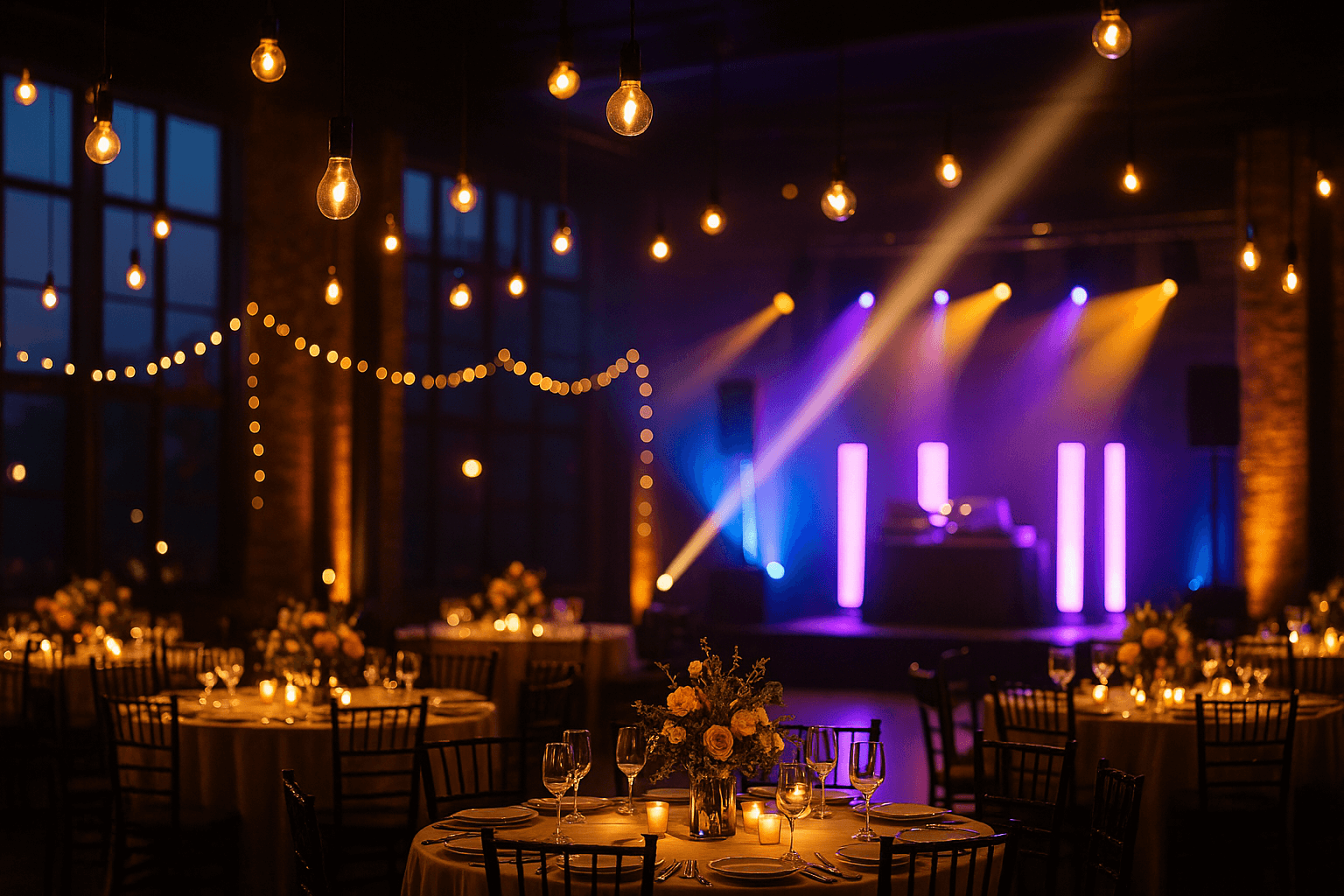The mood of an event is shaped by more than just decorations and speeches. Music and lighting play a major role in creating the right atmosphere, guiding emotions, and enhancing the overall experience. Whether it’s a wedding, product launch, or gala dinner, these two elements can elevate an event from good to unforgettable.
In this article, we explore how to strategically use music and lighting to set the right tone for every part of your event.
Understanding the Role of Ambience
Every event has a purpose, and the ambience should support it. Before selecting music or lighting setups, ask yourself:
- Is this a formal or casual event?
- Should guests feel energized, relaxed, inspired, or reflective?
- Are there different phases with different moods (e.g., networking, speeches, celebration)?
The clearer you are about the desired vibe, the easier it will be to plan technical elements that match.
Choosing Music That Supports the Experience
Music creates an emotional backdrop. Selecting the right type and tempo for each moment is key.
Here are some ways to align music with the event phase:
- Arrival and Check-in: Use soft background music with a pleasant tempo. Instrumentals, acoustic, or lo-fi options are ideal for relaxing guests as they enter.
- Main Program or Presentations: Lower the volume or use ambient tones that don’t distract. Avoid lyrics during speeches.
- Socializing or Dinner: Keep it upbeat but subtle—jazz, soft pop, or classical works well.
- Celebration or After-party: Raise the energy with lively tracks or live music. This is where DJs or bands can take center stage.
It’s helpful to work with an experienced sound technician or DJ who can read the crowd and adjust in real time.
Managing Sound Levels and Equipment
Good sound doesn’t mean loud. It means clarity and balance. Make sure that guests can hear conversations without straining, but still feel immersed in the environment.
For this, you’ll need:
- A reliable speaker system distributed evenly across the venue
- Microphones for speakers or performers
- Backup audio equipment in case of technical issues
- A pre-event soundcheck
Avoid placing speakers near doors or reflective surfaces like glass that can distort the sound.
Using Lighting to Shape Emotions
Lighting has the power to subtly guide how people feel in a space. Warm tones promote comfort and intimacy, while cool tones add energy and modernity.
Here are lighting ideas for different event moments:
- Entrance: Use focused spotlights or soft washes of color to welcome guests and highlight signage.
- Main room: Consider layering light using chandeliers, string lights, or uplighting along walls.
- Speeches or Performances: Use focused lighting on the stage or podium, dimming ambient lights for emphasis.
- Dining: Use candlelight, table lamps, or soft LEDs to make mealtimes more intimate.
- Dance floor: Add dynamic lighting like strobes, color changers, or LED panels for excitement.
Keep lighting flexible so you can transition smoothly as the event progresses.
Syncing Music and Lighting for Impact
When music and lighting work together, they amplify each other’s effect. A slow, warm fade of lights alongside a soft piano track can make an emotional speech even more powerful. A synchronized beat drop with strobe lighting can transform the dance floor into a moment guests remember.
Coordinate timing for key moments:
- First dances
- Awards presentations
- Product reveals
- Special entrances or exits
Automation software or live technicians can help execute timed sequences perfectly.
Adapting to Daylight and Venue Features
In outdoor or semi-open spaces, natural light becomes part of your plan. Consider:
- Daytime events: Use sheer drapes, umbrellas, or canopies to soften sunlight and avoid harsh shadows.
- Sunset transitions: Gradually introduce artificial lighting as the sun sets, so the shift feels seamless.
- Night events: Go bold with lighting, as you have full control over the scene.
Also, use the venue’s architectural features to your advantage—lighting columns, plants, or walls adds dimension and character.
Considering Cultural and Event-Specific Expectations
Different cultures and event types have unique expectations for music and lighting. A business event may lean toward minimalism and precision, while a wedding might focus more on emotional storytelling.
Always tailor choices to:
- The event theme and goals
- Guest demographics and preferences
- Cultural norms or traditional elements
If needed, include cultural or regional music and color choices that feel meaningful to the guests.
Ensuring Technical Support Throughout the Event
Even the best plans can fall apart without the right support. Hiring qualified technicians or AV professionals ensures that sound and lighting systems function properly throughout the event.
They can:
- Monitor volume and quality
- Adjust settings in real time
- Troubleshoot issues on the spot
- Coordinate with performers or speakers
Never underestimate the value of a skilled team behind the scenes.
Creating Memorable Highlights
Use music and lighting to create intentional “wow” moments that guests will talk about long after the event ends.
Examples include:
- A dramatic entrance sequence with spotlight and orchestral music
- A surprise reveal using dimmed lights and rising sound
- A final song and lightshow to close the night
Build anticipation through pacing, then deliver a high-impact experience that guests won’t forget.
Final Thoughts
Music and lighting are more than just background features—they are essential storytelling tools that shape how your event is experienced. When chosen thoughtfully and coordinated well, they can elevate the atmosphere, stir emotion, and leave a lasting impression. With planning, creativity, and technical know-how, you can use sound and light to create a truly immersive and unforgettable event.
